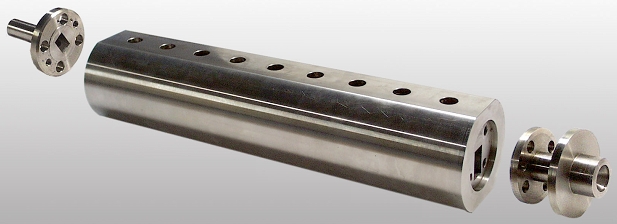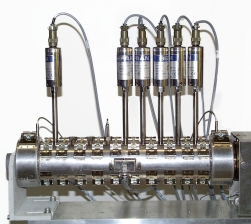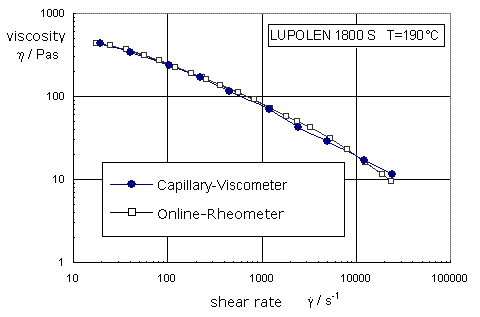Objective
In- and online measurements are increasingly used in process or quality control. In principle all rheological measuring techniques can be used online, but contact-free methods without moving parts are favoured (e.g. oscillatory test sensors). Furthermore methods like ultra sonic doppler anemometer, magnetic inductive- and coriolis force sensors are used.
Operating Principle
The capillary principle is suited well for in- and online rheometry. In our institute a special configuration has been developed. The profile in in the die is varied along the flow direction. Therefore, at a constant flow rate different shear rates are probed in different channel sections. Each section is equipped with a pressure transducer. This setup allows for a simultaneous determination of the viscosity at up to eight different shear rates. In addition the pressure drop at each cross-section can be used to determine elastic fluid properties.


Fig. 1 Inline rheometer using the capillary principle
Specifications
|
Shear rate range: |
|
|
Temperature range: |
|
Applications
- Viscous and elastic properties of dope solutions
- Thermo-mechanical degradation of starch during extrusion
- Molecular weight distribution at polymer melts and solutions
- Polycondensation of synthetic resins

Fig. 2 Flow functions measured with laboratory and online rheometer in comparison
Literature
A. Hans, B. Hochstein, Proceedings of the 6th European Conference on Rheology, Erlangen, Germany, 2002
N. Willenbacher, New Applications for In Line Rheometry in Chemical Process Control, Proceedings of the XIIth International Congress on Rheology, Quebec, Kanada, 1996
